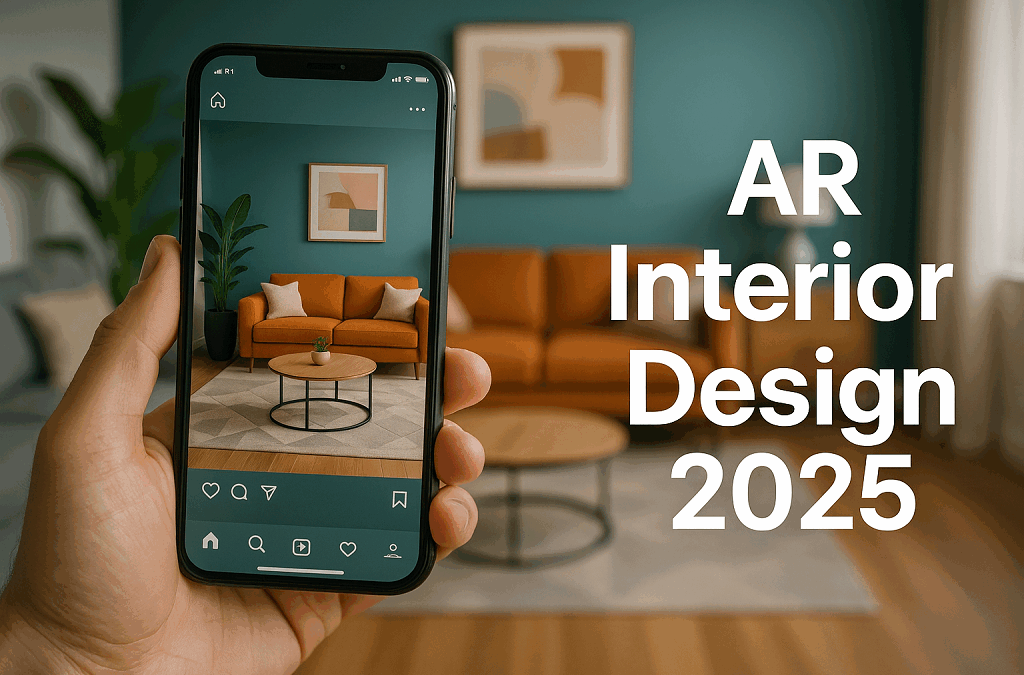Designing a home used to mean imagination, sketches, and a lot of guesswork. Now, you can lift your phone, scan the room, and watch new furniture, lighting, and colors appear instantly. That’s the magic of AR interior design — a technology that turns empty rooms into interactive canvases.
By 2026, AR is no longer an experimental toy. Interior designers, furniture brands, and even DIY homeowners rely on it to plan spaces that actually work. Augmented visuals reveal proportions, color balance, and flow in real scale, helping people make confident decisions before a single purchase.
This guide explores how AR reshapes the design process — from AR room design tools that simplify client work to full-scale business apps that bring 3D creativity into everyday life. You’ll also learn how Scrile AI helps studios and startups build their own AR design solutions from the ground up.
Why AR Has Become the Standard in Interior Design
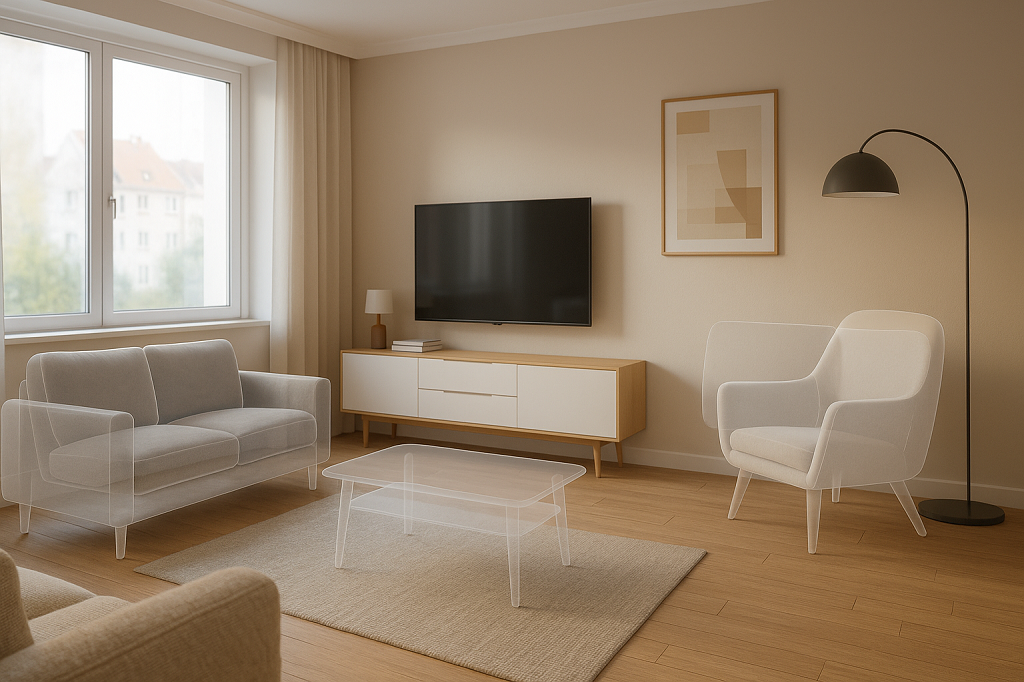
Interior design has always been about visualization. It began with pencil sketches, moved to computer-generated 3D renders, and now stands in the era of interactive overlays that merge the digital with the real. With AR home design, clients can finally see what a concept will look like in their actual rooms, not just on paper or screen.
The appeal is simple: less imagination, more accuracy. Designers don’t have to rely on mood boards or verbal explanations; they can show the transformation live. Clients walk into their living rooms and instantly view how a new sofa fits, how colors change the atmosphere, or how lighting shifts the mood. It’s practical, visual, and persuasive.
The augmented reality home design market is growing fast. Analysts predict that by 2030, the combined AR/VR design sector will be worth tens of billions. The reason is efficiency. AR cuts revision cycles, lowers material waste, and allows teams to finalize layouts in hours instead of days. It’s no longer a futuristic concept but an everyday design tool — used by professionals who value precision and by homeowners who just want to get things right before buying.
How AR Changes the Client Experience
AR changes how people understand space. Through an app, clients can walk around a room, rotate furniture, and swap color palettes in real time. They can even change flooring or wall textures while standing in the same physical spot.
Designers use AR room design tools to showcase multiple versions of a project without moving a single object. For larger projects, AR house design software allows real estate professionals to stage full properties virtually, helping buyers and renters imagine potential renovations.
One design studio, for example, uses AR projection to show clients how sunlight moves through a kitchen during the day. It’s a small demonstration that builds trust — and a big reason AR now defines how modern interior design gets done.
Core Technologies Powering AR Interior Design
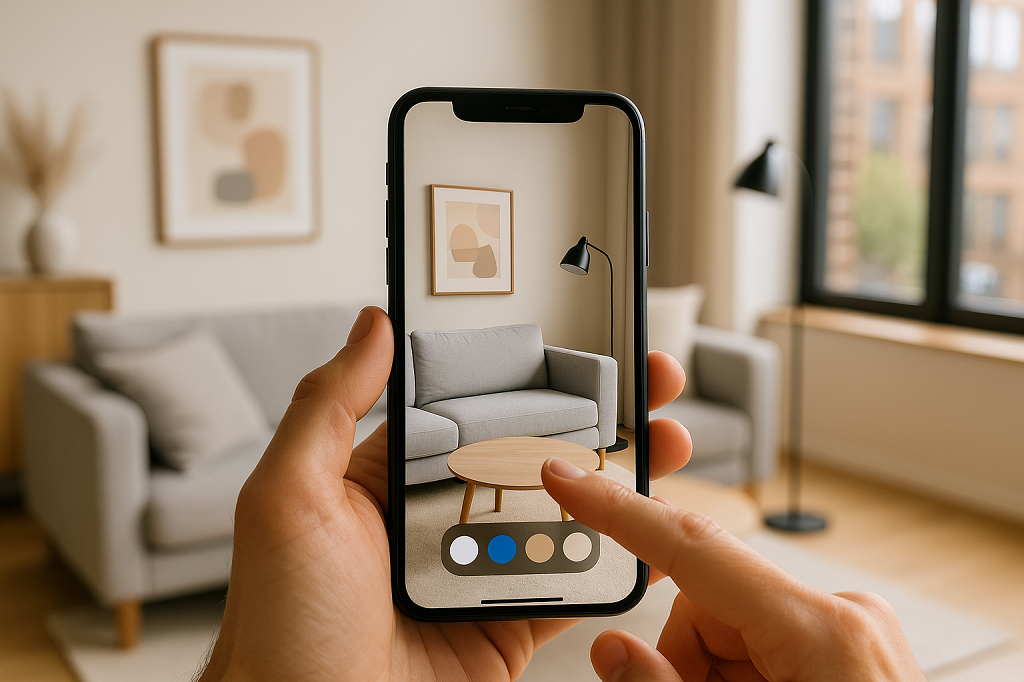
You don’t need fancy headsets or studio gear to use AR design anymore. Most of it now runs on phones and tablets. The same camera that takes your selfies can map walls, measure corners, and drop a virtual sofa right where it belongs.
There’s also a new wave of web-based AR. These versions run straight from a browser, no downloads required. For designers and retailers, it means fewer steps between showing and selling. A client can tap one link and see a full design appear inside their own living room.
Modern AR apps rely on a mix of sensors, frameworks, and rendering tools that make everything look believable.
- ARKit and ARCore – the base technology for iOS and Android tracking, handling surface detection and scaling.
- LiDAR sensors – send laser pulses to capture precise depth data, crucial for accurate placement and measurements.
- Depth mapping and photogrammetry – rebuild rooms as 3D models, including light and surface texture.
- echo3D and Unity – manage 3D rendering, spatial anchoring, and cloud-based visualization.
- Cloud anchors and shared maps – allow multiple people to see the same digital layout in one room.
- AI scene recognition – helps detect walls, furniture, and room types to keep proportions right.
- WebAR engines – power browser-based AR experiences without any app install.
Examples of Popular Solutions
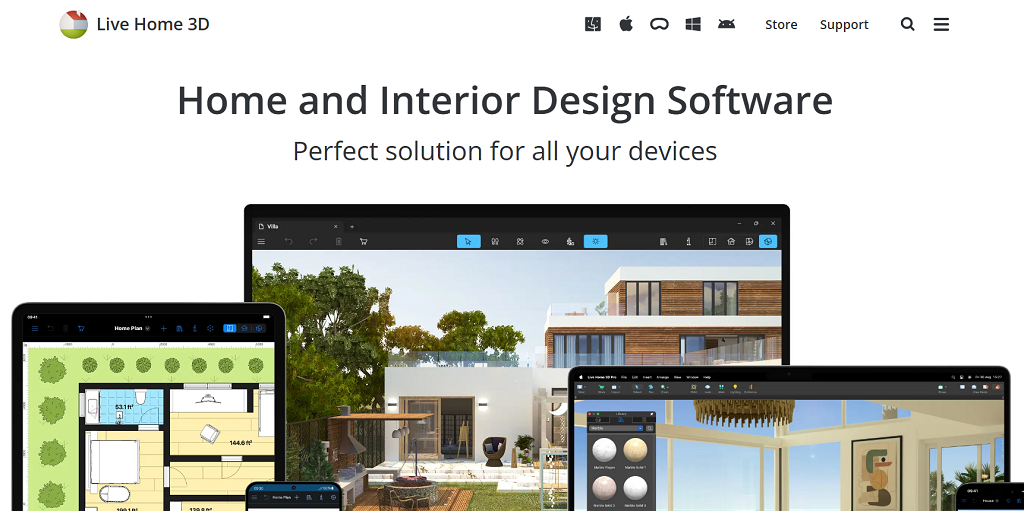
Once people got comfortable using AR for simple room previews, a wave of polished apps followed. Each one found its niche — from fast home makeovers to full architectural visualization. These are the tools shaping AR interior design in 2026.
- LiveHome3D — professional-grade software that blends floor planning, 3D modeling, and AR walkthroughs. It’s popular among studios that need to show layouts and lighting before construction begins.
- Houzz — part catalog, part AR viewer. It lets users browse furniture and instantly project it into their living rooms to compare materials and colors.
- IKEA Place — made for simplicity. Scan the space, pick an item, and view it in true scale — ideal for everyday buyers testing fit and style.
- Morpholio AR SketchWalk — used by designers to walk clients through projects. They can adjust walls or textures right inside the virtual room.
- echo3D — a backbone for many AR apps. It handles 3D rendering, syncing, and cloud storage so multiple users can view the same layout in real time.
- Spacely AI — one of the newest entries in augmented reality home design. It suggests furniture placement and color palettes automatically, using AI to make spaces feel balanced..
These tools make AR design easy to trust. They let people experiment with style, structure, and scale while seeing every change unfold inside their actual homes.
Monetization Opportunities for Studios
For many studios, AR interior design started as a way to impress clients. Then they realized it could earn money on its own. When people see results right in front of them — not as sketches but as full-scale visuals — they’re more likely to commit. AR isn’t just a design preview anymore. It’s a service model that builds trust before a project even starts.
Design firms now use AR to package new kinds of offers:
- Subscription-based access. Clients pay a monthly fee to use interactive 3D previews and experiment with layouts at home.
- Paid design templates. Digital catalogs of pre-modeled furniture, wall textures, or lighting setups can be sold as ready-to-use assets.
- Consultation upgrades. Instead of sending 2D renders, studios can charge extra for live AR sessions — clients walk through their future space while the designer explains every detail.
- Virtual staging services. Real-estate agents or homeowners pay to showcase a property using AR previews that make empty rooms look furnished.
For design firms ready to create their own branded AR experience, there are flexible ways to build it — customized interfaces, subscription models, and secure payment systems can all come together under one tailored solution.
Create an AR App for Interiors with Scrile AI
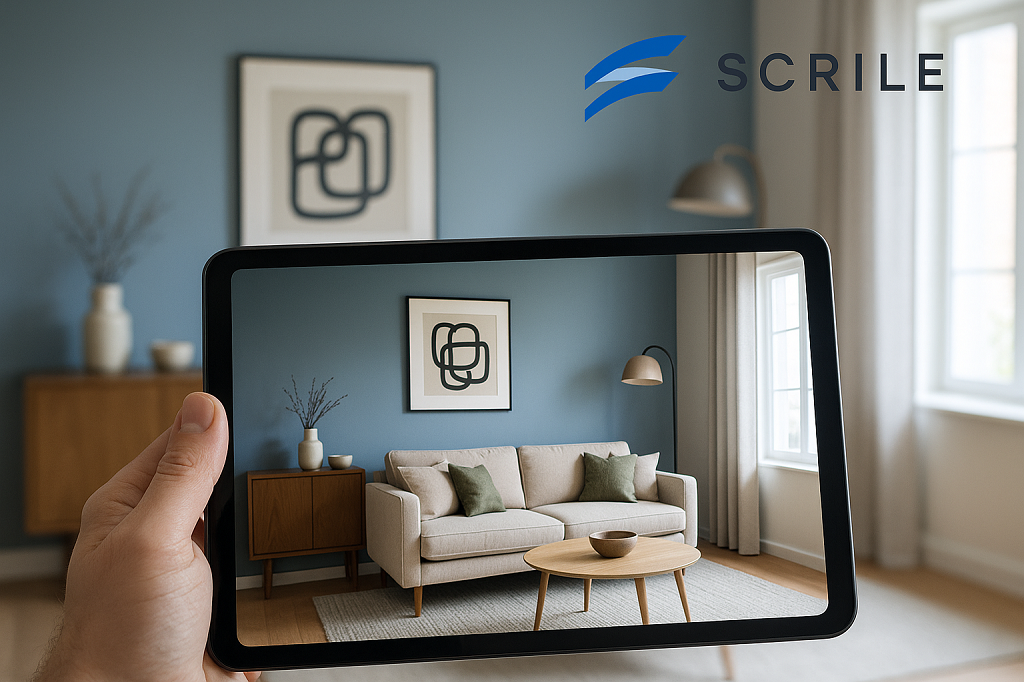
After exploring popular tools, it becomes clear that most ready-made apps only go so far. They work for basic previews but fall short when a studio wants to stand out — with its own branding, features, and revenue system. That’s where Scrile AI comes in.
Scrile AI isn’t a plug-and-play app builder. It’s a custom development service that helps studios and design businesses build full-scale digital products. Every part of the system — visuals, chat, payments, analytics — can be adapted to match the way a company works.
Unlike generic AR kits, Scrile AI focuses on personalization, privacy, and long-term ownership. You decide what data stays private, how your clients interact with the tool, and which features drive profit. Designers can request 3D room scanning, in-app chat for consultations, video previews, or integrated payment gateways. It’s built to match your workflow, not the other way around.
Scrile AI enables:
- Building a full AR interior design or visualization app from the ground up.
- Integrating chat, video, and community spaces for real-time client collaboration.
- Adding secure payments, subscriptions, and analytics dashboards.
- Maintaining complete control over code, data, and interface design.
For studios, this means scalability without compromise. You can start small — maybe with a simple AR preview app — and expand it later into a full ecosystem for clients and designers. Each feature grows with your business instead of locking you into someone else’s framework.
Scrile AI gives creative teams what they’ve been missing: freedom to shape technology around design, not the other way around. It’s a long-term foundation for studios that want to own their tools, their brand, and their future.
Conclusion
AR interior design is no longer a novelty — it’s a core part of how modern studios work and sell ideas. It blends creativity with precision, turning imagination into something clients can see and trust. Success now comes from realism, ease of use, and interactive detail.
For studios, the real growth starts with ownership. Scrile AI helps teams build their own AR tools — fully branded, scalable, and designed for long-term profit.
Contact the Scrile AI team and bring your AR design vision to life.
FAQ
What is AR in interior design?
AR interior design projects digital furniture, decor, and lighting into real rooms using a phone or tablet. It helps clients visualize layouts, test styles, and make confident choices before buying or renovating.
Is there a free AI for interior design?
Yes. Spacely AI lets users upload room photos and get instant design suggestions for free. It’s beginner-friendly and ideal for experimenting with furniture, lighting, and colors.
What is the VR app for interior design?
Live Home 3D creates detailed virtual home models for Apple, Windows, and Android devices. With VR headsets, users can explore rooms, test layouts, and refine designs before any real changes begin.

Polina Yan is a Technical Writer and Product Marketing Manager, specializing in helping creators launch personalized content monetization platforms. With over five years of experience writing and promoting content, Polina covers topics such as content monetization, social media strategies, digital marketing, and online business in adult industry. Her work empowers online entrepreneurs and creators to navigate the digital world with confidence and achieve their goals.

